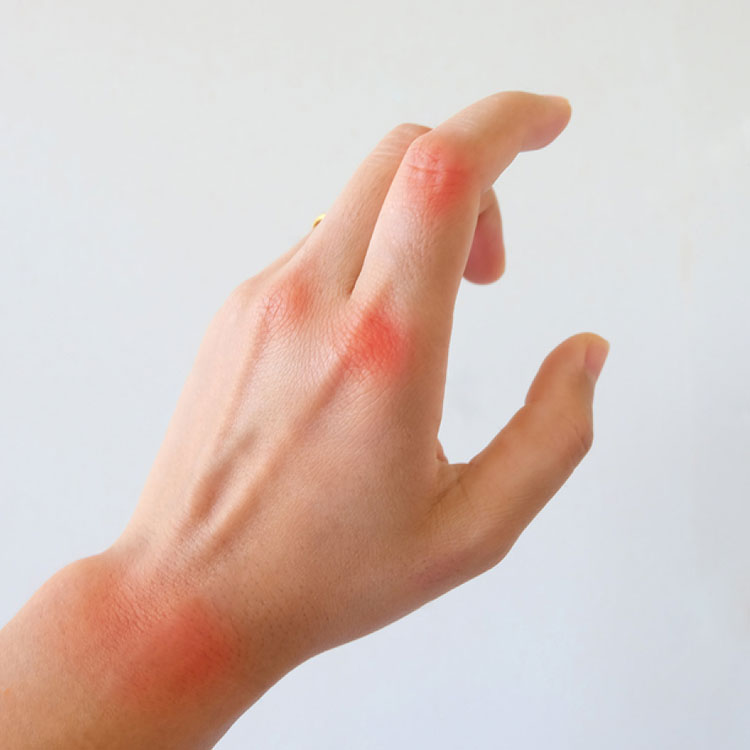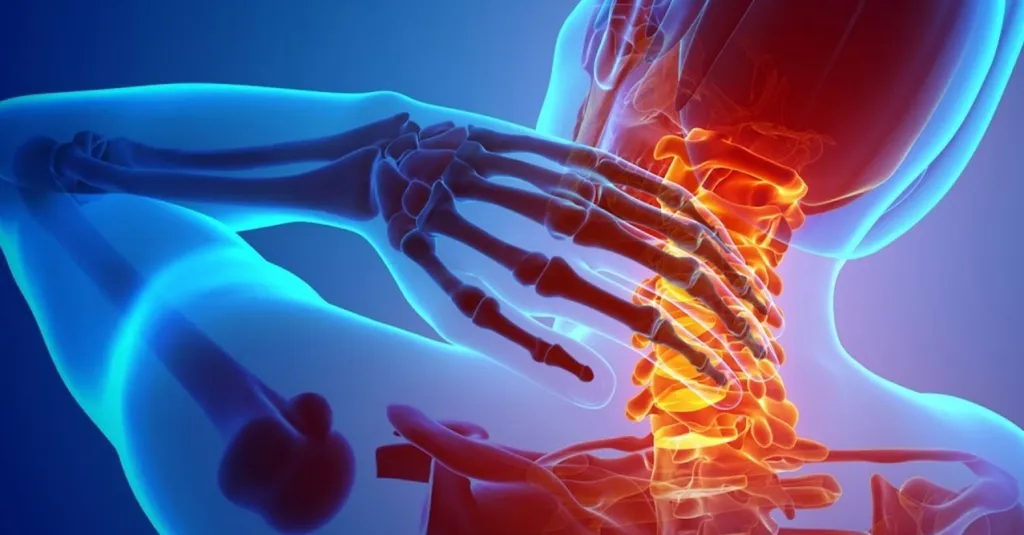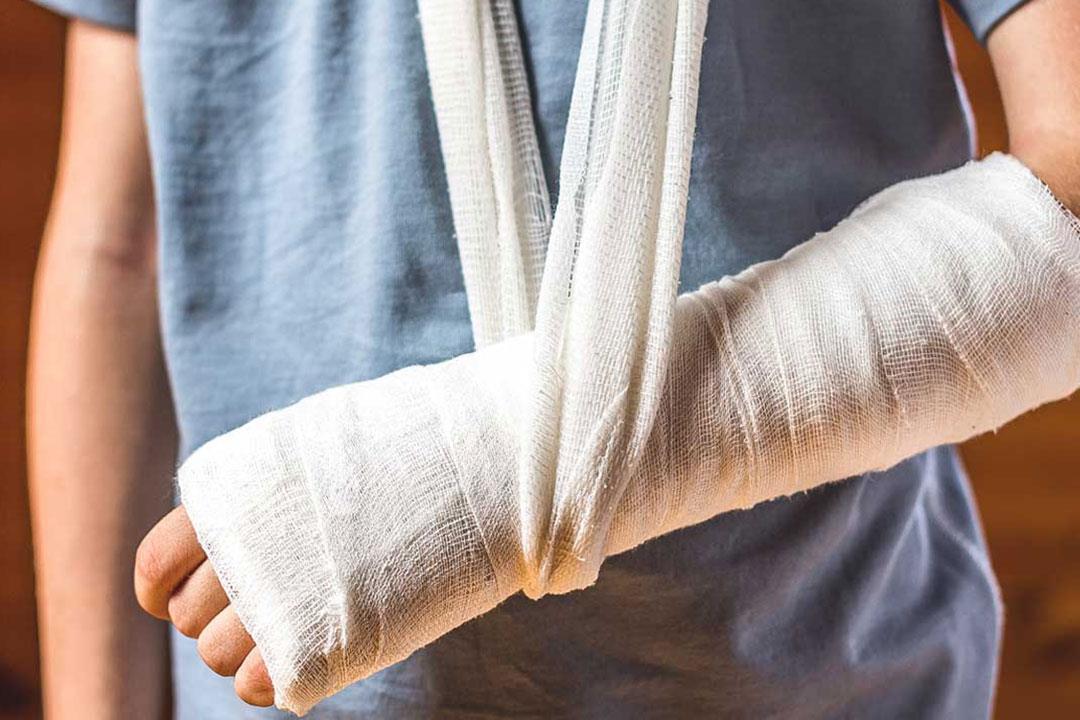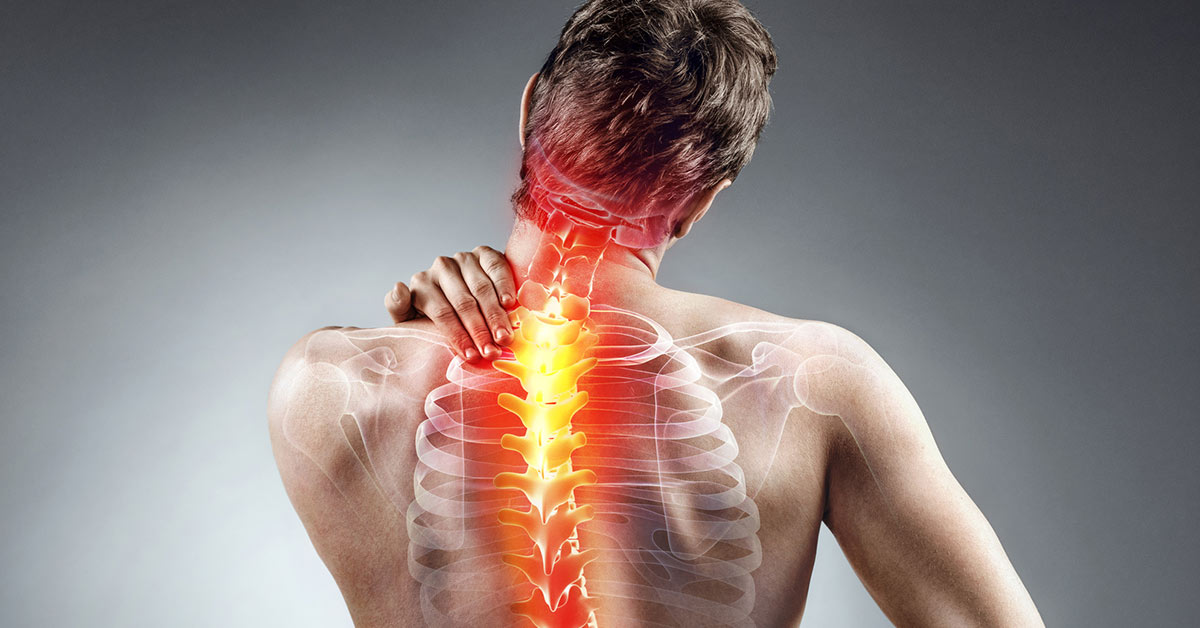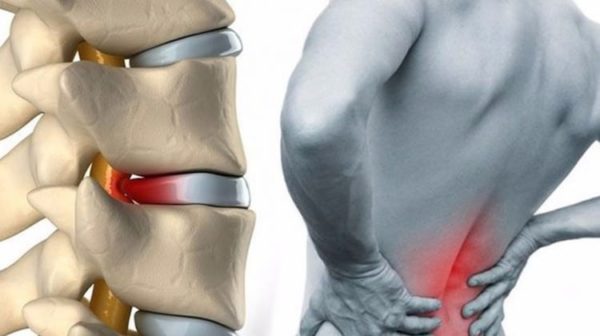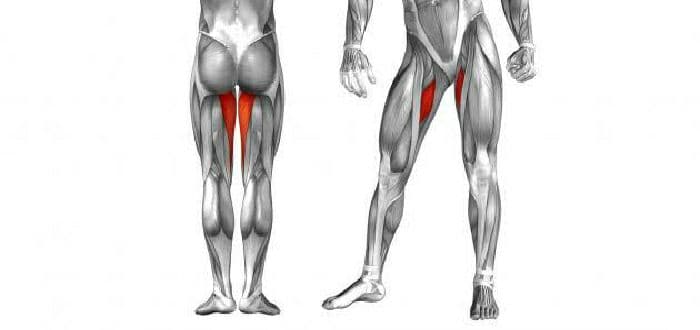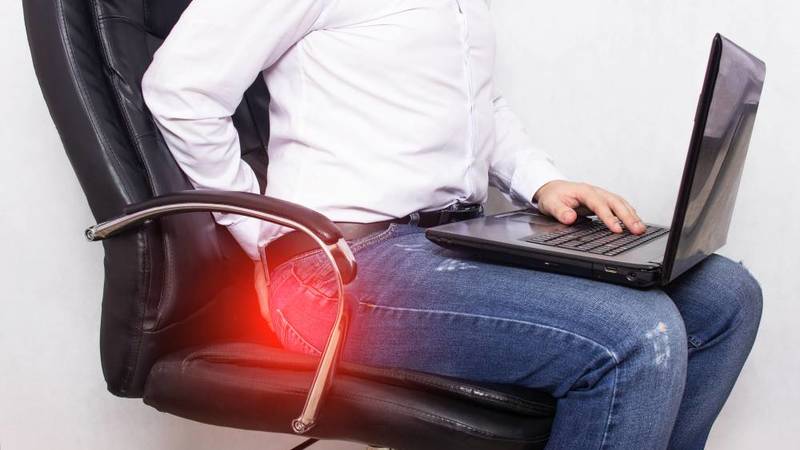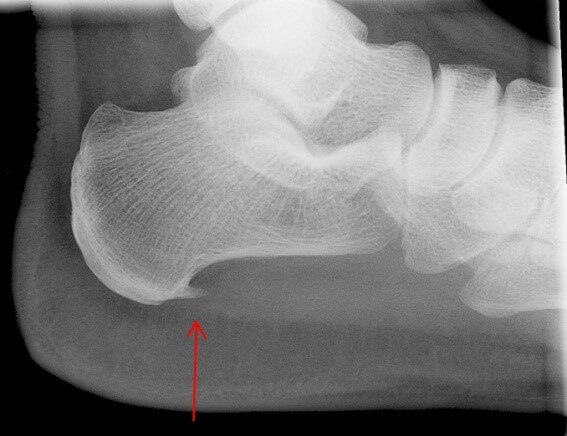!Learn about Coccyx Inflammation and How to Deal with It
Coccyx Pain, negatively affects the daily quality of life and ability of individuals to perform routine activities. In this article, we will explore the concept of coccyx pain in more depth, including its causes, symptoms, and available treatment options. We will also provide practical tips to alleviate the pain and accelerate the healing process, in addition to reviewing the prevention of this troublesome condition.
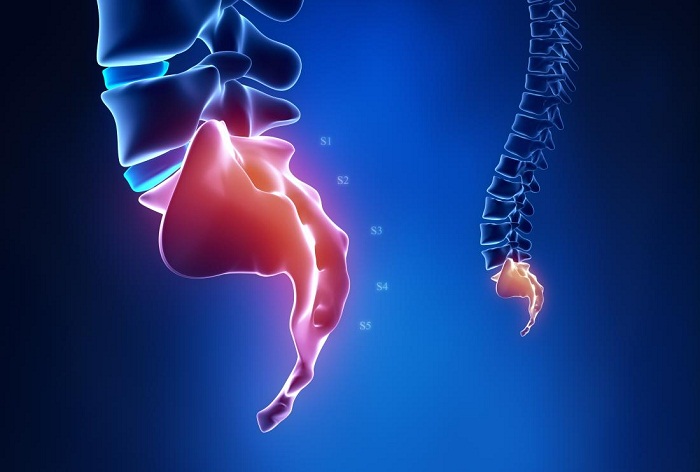
Coccyx Pain
Many people suffer from the problem of coccyx pain, which causes severe pain in the coccyx or tailbone area. Falling on the buttocks is the most common cause of this pain, as it leads to inflammation or even infection in the affected area.
Usually, coccyx pain is caused by problems in the coccygeal-spinal joint between the coccyx bone and the sacrum bone. This pain can cause severe discomfort when sitting or leaning on the back, and many factors are considered the causes of coccyx pain.
These include sitting on hard floors for long periods, direct injury to the coccyx, and stress during sports activities such as cycling. Doctors also point out that pregnant women may be more susceptible to this type of pain.
To treat coccyx pain, doctors recommend avoiding direct sitting on hard floors, using a medical cushion to reduce pressure on the affected area, and using pain relievers such as analgesics. In case of no improvement in symptoms, physical therapy sessions are recommended to relieve pain and promote healing of the area. Patients suffering from coccyx pain should consult their doctor for accurate diagnosis and appropriate treatment, as treating coccyx pain may take some time.
Get rid of the daily annoyance with the treatment of coccyx pain with Dr. Amr Amal.
How do I know if the coccyx is inflamed?
When the coccyx becomes inflamed, certain symptoms can indicate the presence of inflammation in this sensitive area. In this guide, we will provide you with a set of tips to help you determine if your sacral nerve is suffering from an inflammatory condition.
- First, one of the most common signs of coccyx inflammation is pain in this area. Individuals affected by this condition experience severe, burning, and tolerable pain in the coccyx, and this pain often persists and does not subside.
- Second, the pain may be accompanied by redness and swelling in the area around the coccyx. If you notice any change in the color of the skin near the painful coccyx area or if you feel any swelling, this may be a clear indication of inflammation.
- Third, if you experience difficulty sitting comfortably or performing your usual movements without any pain in the coccyx, there may be an inflammation present. Coccyx inflammation can also affect body movement and the ability to perform daily activities normally.

How do I get rid of coccyx pain?
- Use ice: Ice can be an effective way to reduce coccyx pain and inflammation. Place an ice pack wrapped in a thin towel on the affected area for 10-15 minutes several times a day.
- Avoid prolonged sitting: Prolonged sitting puts pressure on the coccyx and can increase its inflammation. Try to stand up and move around regularly to relieve the pressure on the coccyx.
- Follow a healthy diet: You should consume fiber-rich foods such as leafy vegetables, fruits, and whole grains, and avoid oily, fatty, and fried foods that can cause coccyx inflammation.
- Practice physical exercises: Regular physical exercises can help strengthen the muscles around the coccyx area and relieve pain. Try stimulating exercises such as walking, swimming, and yoga.
- Use comfortable cushions: Choose a comfortable and padded cushion for sitting or sleeping that provides support and reduces pressure on the coccyx. A round or square-shaped cushion can help distribute the weight evenly.
- Avoid psychological stress: Psychological stress is a contributing factor in the occurrence of coccyx inflammation in some individuals. Try to apply deep breathing techniques and muscle relaxation to reduce stress and calm the nerves.
- Consult a doctor: If the pain and inflammation of the coccyx persist, it is important to consult a doctor. The doctor may provide you with precise guidance and prescribe the appropriate treatment, such as anti-inflammatory medications and physical therapy.
Always remember to follow the guidelines of Dr. Amr Amal and be patient, as coccyx inflammation may take some time to fully heal.
How long does coccyx inflammation last?
Coccyx inflammation is a common problem that some people may face, and this pain usually subsides within a few weeks or months without the need for intensive treatment. However, there are some patients who may suffer from chronic and persistent pain that can significantly affect their daily life.
Generally, coccyx pain disappears within a few days, but the pain can quickly become heavy and annoying. If the pain in the coccyx area persists for more than a few weeks, or if the pain is severe and fluctuates at different times, it is recommended to seek healthcare and advice from specialists in this field.
The pain may be more acute when sitting, or pain when sitting and standing up, or even when changing the sitting position and getting up. In most cases, you will see a gradual improvement within a few weeks or months.
However, there are cases that may suffer from chronic pain in the coccyx, which may not improve over time. If you are experiencing persistent coccyx pain that does not go away, it is best to consult a healthcare provider specialized in this field for accurate diagnosis and appropriate treatment.
Don’t suffer anymore, consult Dr. Amr Amal to get rid of coccyx pain permanently.

How long does it take to heal coccyx pain?
Coccyx pain is a common condition that many people suffer from, and it can have a significant impact on daily quality of life. The duration of coccyx pain healing varies from person to person, as it depends on several different factors.
Generally, the pain resulting from coccyx inflammation is treated non-surgically according to the doctor’s recommendations, and a comprehensive approach is advised, not just focusing on pain reduction, but also addressing the underlying causes of the pain, such as pressure on the coccyx and proper performance of physical activities.
Healing from coccyx pain can also take some time, as it can last for several months or even years in some severe cases. However, in most cases, the coccyx pain improves over time with the necessary treatment.
In general, a set of measures are recommended to alleviate coccyx pain and accelerate healing, such as avoiding prolonged sitting and using specialized cushions that reduce pressure on the coccyx area during sitting, taking the medications prescribed by the doctor, and resting in bed when needed.
In some cases where the person does not respond to the usual treatment, the doctor may recommend other options such as physical therapy or biological injections to relieve pain and accelerate healing. Individuals should also adhere to the doctor’s recommendations and return to them if there is no improvement in the condition or the appearance of new symptoms.
It is advisable to avoid self-measures or trying any treatment without consulting the specialist doctor, and consulting the specialist doctor is the best way to deal with coccyx pain and determine the appropriate healing duration for each person.
The difference between coccyx pain and disc
Here is the difference between coccyx pain and disc:
- Coccyx pain:
- Causes: Coccyx pain occurs due to irritation or inflammation of the coccyx, which is the final bone in the spine. The irritation may be caused by direct injury, prolonged sitting, use of chairs that do not provide adequate support for the coccyx, or a tear or crack in this bone.
- Symptoms: The patient experiences severe, localized pain in the coccyx area when sitting or changing body position. The pain may be less intense at rest and can be accompanied by other symptoms such as swelling and tenderness around the affected area.
- Treatment: Treatment for coccyx pain involves various methods, including physical therapy that includes exercises to strengthen the back and abdominal muscles, applying ice to the affected area to reduce inflammation, and using coccyx cushions to provide support and relieve pressure on the coccyx.
- Causes: Disc pain occurs when a part of the intervertebral disc, which is a gelatinous material located between the vertebrae to provide cushioning and protection, is torn or slipped. This disc tear can result from stress, acute injury, or repeated friction over a long period.
- Symptoms: Disc pain is accompanied by severe and fluctuating pain in the back and leg, and may be accompanied by numbness or weakness in the limbs. The pain tends to increase when sitting or standing for long periods, as well as when lifting heavy objects or making sudden movements.
- Treatment: Treatment for disc pain may include strengthening the back and abdominal muscles through physical therapy, reducing inflammation and relieving pain with medications prescribed by the doctor. Severe cases may require surgical intervention to restore the normal balance of the intervertebral disc.

Treatment of coccyx inflammation
- Rest and avoid sitting on the ground and hard chairs:
- It is recommended to take a rest when you have coccyx inflammation.
- Avoid sitting on the ground or hard chairs as much as possible, as this puts pressure on the coccyx area and leads to increased pain.
- You can use a coccyx cushion to provide support and reduce pressure on the affected area.
- Apply warm compresses:
- It is recommended to apply warm compresses to the coccyx area to relieve pain and soothe the inflammation.
- Use warm compresses wrapped in a soft cloth and place them on the affected area for 15-20 minutes several times a day.
- Manual therapy:
- Massaging the coccyx area can help relieve pain, improve blood flow, and renew the tissues.
- It may be beneficial to visit a professional massage therapist who works to relieve tense muscles and improve the flexibility of the area.
- Practice simple exercises:
- Performing simple exercises to strengthen the buttock, abdominal, and back muscles can help relieve the pressure on the coccyx area.
- Consult your doctor or physical therapist to get suitable exercises for your condition.
- Take medications:
- The doctor may prescribe non-steroidal anti-inflammatory drugs (NSAIDs) to relieve pain and swelling.
- Simple painkillers such as aspirin or paracetamol can be used for temporary pain relief.
- Medical treatment:
- In case of severe injury or no improvement in symptoms after a period of self-treatment, it is recommended to visit a doctor.
- The doctor may prescribe the appropriate medical treatment or procedures, such as injecting numbing agents into the affected area to relieve pain.
Effective and innovative solutions to get rid of coccyx inflammation with Dr. Amr Amal.
Causes of coccyx pain in women
This list will provide the exclusive set of medical information on the causes of coccyx pain in women. While consulting a qualified physician is necessary for the diagnosis and treatment of cases of coccyx pain, this information can help you understand the potential risk factors and provide a general idea about this troublesome condition.
Causes of coccyx pain in women:
- Bruising and injuries: Falling or being hit in the coccyx area is a common cause of coccyx pain in women, which can occur due to falling on the buttocks, accidents, or falls during sports activities.
- Breastfeeding and pregnancy: During pregnancy and postpartum, the pelvic bones become more sensitive, and continuous pressure during breastfeeding or the aftermath of childbirth can cause coccyx pain in women.
- Vitamin D deficiency: Vitamin D deficiency may contribute to increased susceptibility to coccyx pain in women. Vitamin D is believed to play an important role in bone health and strength, so it is important to ensure an adequate intake of this vitamin through nutritious foods and supplements if necessary.
- Prolonged sitting on a hard or narrow surface: Coccyx pain may increase in women who have long office hours or spend extended periods sitting on a hard or narrow surface. Prolonged and constant sitting can compress the coccyx area and cause chronic pain.
- Arthritis: Coccyx can be affected by arthritis, causing chronic pain in women. This can occur due to rheumatoid arthritis or the effects of other inflammatory diseases affecting bones and joints.
- Severe pressure on the coccyx during childbirth: The coccyx may be subjected to pressure and impact during childbirth, and sometimes this pressure can lead to coccyx injury and irritation, thus causing pain.
- Exaggerated nerve response: The nervous system may send a false signal to the body that there is coccyx pain, which could result from nerve irritation or disorders associated with the nervous system.

Tips for Dealing with Coccyx Pain
-
- Use a coccyx cushion: Provide a comfortable and cushioned seat to sit on, reducing pressure on the coccyx area and providing necessary support for the back. A coccyx cushion can be used on most chairs and provides protection against hemorrhoids, fissures, joint pain, sweating, and surgery.
- Avoid prolonged sitting: Alternate sitting positions and avoid staying in a static sitting position for long periods. You can stand for some time or walk a little to relieve pressure on the coccyx.
- Find a comfortable seat: Choose a seat that provides adequate support for the spine and coccyx. You can consult a healthcare professional for a recommendation on the best type of seats that suit your condition.
- Do stretching exercises: Perform stretching exercises for the back, buttocks, and thighs to strengthen the muscles around the coccyx, reduce pressure on it, and consult a physical therapist to learn appropriate movements.
- Consult your doctor: If coccyx pain persists and worsens, you should consult your specialist doctor for a proper diagnosis and determine the appropriate treatment. Treatment may include using pain-relieving medications or undergoing physical therapy sessions.
- Reduce Pressure on the Area: You should avoid excessive stress on the coccyx area, such as lifting heavy weights or engaging in sports activities that put significant pressure on the area.
- Maintain a Healthy Weight: Obesity and weight gain can increase pressure on the coccyx. Exercise regularly and follow a healthy diet to maintain a healthy weight.
- Consume Fiber-Rich Foods: Include fiber in your diet to prevent constipation and excessive pressure on the coccyx area.
- Avoid Harmful Behaviors: Avoid sitting on the ground improperly or sitting on hard surfaces for long periods. Provide comfort and support to the coccyx by avoiding these harmful habits.
- Consult an Expert: If you suffer from persistent and bothersome coccyx pain, it is advisable to consult a rheumatology specialist or a spine surgeon for a thorough evaluation and personalized treatment recommendation.
Get rid of embarrassment and discomfort thanks to Dr. Amr Amal’s treatment for coccyx inflammation.
Best Doctor for Treating Disc Herniation in Egypt
There are many distinguished doctors in the field of orthopedic surgery in Egypt, but Dr. Amr Amal is considered one of the best. Dr. Amr is known for his extensive experience in all types of bone surgeries, making him the ideal choice for patients in need of specialized care and treatment.
Dr. Amr holds high qualifications and intensive training in the field of orthopedic surgery, having earned both a Bachelor’s and Doctorate degree in Orthopedic Medicine. He completed his practical training in prestigious hospitals in Egypt and abroad. Through his dedication and hard work, Dr. Amr has built an excellent reputation among patients and colleagues in the medical field.
Dr. Amr also serves as a lecturer in bone, joint, and arthroscopic surgeries at Ain Shams University, where he shares his practical experiences and knowledge with medical students. With five years of experience in this field, he enhances his credibility and professionalism in providing healthcare to patients.
Some of Dr. Amr Amal’s areas of expertise include bone fractures, hip joint replacement, leg deformities, and various other orthopedic surgeries. He utilizes the latest techniques and scientific advancements in his field, enabling him to provide effective and appropriate treatment for his patients.

